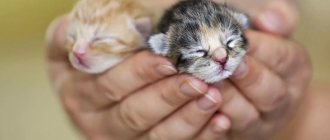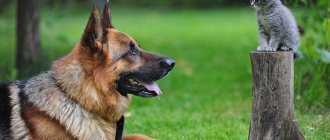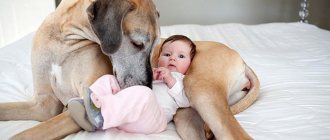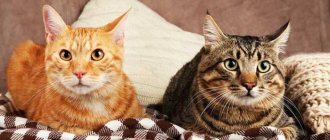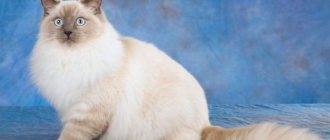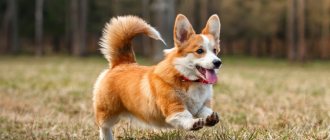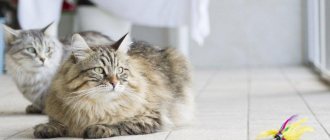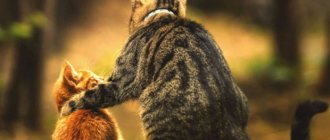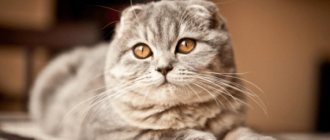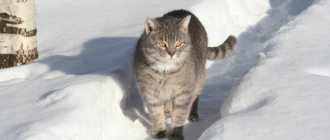Cats are much more adapted to living in an apartment than dogs. And yet, we can highlight several character traits of the animal that will make the cat simply an ideal pet for keeping in an apartment. For example, an ideal apartment cat should be calm, in some cases it may even be passive and be able to occupy itself in the absence of its owners.
You need to remember that, unlike dogs, cats prefer vertical space, so your pet will feel very comfortable if you equip it with a certain number of shelves, stands and niches. And the higher they are, the more comfortable your furry pet will be.
The list below describes the cat breeds that are best suited for apartment living.
Bengal breed
Photo Credit: lisheeny Flickr via Compfight
A relatively young breed of shorthaired cats. Representatives of this breed are distinguished by leopard print colors, like their larger wild counterparts. But in character this breed does not differ in the ferocity of its wild relative: the cat is very gentle and playful. A sort of miniature affectionate leopard in your home. But you need to take into account that Bengals are very active and very sociable. They get along well with other animals, as long as they do not consider them food or hunting.
Lifespan: 18-20 years.
Weight and size: height - 40 cm, length - 90 cm, average weight of a cat - 4-7 kg, cat - 3-6 kg.
Maintenance: minimal. Periodic bathing and brushing during shedding is all that is needed. You might be surprised, but this breed simply loves to swim. Therefore, the owners of this cat will certainly not have any problems with this. But it is necessary to accustom a cat to a scratching post from a very early age.
Is it worth adopting a purebred cat?
Some people prefer "mutts". These cats did not have noble ancestors in their family or they have mixed roots. And this has its advantages. For example, mestizos have better health than their “blue-blooded” counterparts. This is due to the wider gene pool. Therefore, the risk of genetic diseases is very low.
However, such cats often have an independent character, and their hunting instincts are more pronounced. Adults love to mark territory, and it is not very easy to wean them from this habit.
The “mongrel” has better health
At the same time, purebred cats have predictable habits. They value cleanliness more because breeders select for breeding those individuals that are less prone to marking territory.
British shorthair breed
Photo Credit: marttiratilainen Flickr via Compfight
The breed was finally formed towards the end of the 18th century. The breed is distinguished by its calmness and friendliness, making it perfect for a novice cat owner. This breed is easily recognized by its characteristic rounded muzzle, and their fur feels plush to the touch. If you cannot devote a lot of time to your pet, then this breed will be the ideal choice for you. Thanks to their independence, the British do not require much attention from their owner, and their peaceful nature allows them to get along well in a family where they also have children and other pets. By the way, an interesting feature of this breed is that male cats grow quite slowly; they reach their full size by about 3 years of age.
Lifespan: on average 12.5 years.
Weight and size: 30-35 cm in height, the average weight of a cat is 4-8 kg, a cat is 3-5 kg.
Care: periodic combing and wiping with a damp cloth to remove dead hair.
The fluffiest cats for an apartment
The following furry pets are suitable for keeping in an apartment:
- Angora is a graceful cat with a peaceful disposition.
- Ragamuffin is the owner of a surprisingly luxurious fur coat that requires special care. The cat needs to be bathed and brushed.
- The Persian cat is fluffy and imposing. Requires care.
- The Siberian cat is beautiful and proud of its luxurious tail. The fur is moderately fluffy and does not tangle too much.
- The fur coat of a Kimra cat is comparable to that of a rabbit to the touch. The cat is not a timid cat and is capable of protecting its owner.
Munchkin
Photo Credit: mila-sera Flickr via Compfight
The Munchkin is a real cat dachshund. A very funny breed with a very interesting history. In fact, all currently existing representatives of this breed descended from one cat named Ezhevichka. The owner of Ezhevichka did not breed this breed on purpose, but simply picked up a cat that was already pregnant at that time on the street. When the cat gave birth to kittens, Sandra Hochnel (the owner) noticed that half of them were short-legged. Since then, cats with short legs have become a separate breed of munchkin cats or, translated into Russian, karapuz. Although, if you are offered to buy a munchkin kitten, and the kitten’s legs are quite long, do not rush to blame the seller for wanting to deceive you, since long-legged munchkins also exist.
The short legs of munchkins do not in any way prevent them from being very active and playful animals who love communication with both children and other animals. It’s very funny to watch how munchkins, with their short legs, try to quietly steal a tasty morsel from the table. The hind legs of this breed are usually longer than the front legs, which causes the body to rise from the front to the back, making the cat look even more funny.
Lifespan: 12-15 years.
Weight and size: height -18-20 cm, average weight of a cat - 3-4 kg, cats - 2-3 kg.
Care: all care for munchkins consists of periodic brushing, which these cats perceive quite favorably. Short-haired munchkins need to be brushed once every few weeks, while long-haired munchkins need to be brushed twice a week.
Is it possible to adopt a cat from a shelter?
People who decided to take such a step believe that it was done correctly. They argue that there are many reasons why a shelter cat will do well in an apartment.
Table 2. Pros and cons of a shelter cat.
Advantages and disadvantages
|
|
As for communication with curators, this is a temporary phenomenon. As soon as volunteers or shelter workers understand that their pupil is in good hands, they stop disturbing the new owner.
Don't be afraid to adopt a cat from a shelter - this has its advantages
Shelters are also found through social networks - usually such organizations have pages. If you couldn’t find an adoption center in your city, you will definitely find one in a neighboring town.
For reference. ADOPTION
(from Latin
adoptio
- adoption), a form of establishing artificial kinship - the inclusion of an individual or several individuals in any related group or family. The motives for adoption could be different: providing a lonely person with a certain status in the system of social connections...Lifehack. From several institutions, the smallest ones are chosen, with the number of inhabitants up to 50 individuals. The cats there are more well-groomed and better cared for.
Maine Coon
American cat breed, originally from Maine. You can always recognize cats of this breed by the presence of tufts on their ears. They also usually have a furry collar, like a lion. If you have aquarium fish or hamsters in your house, then the Maine Coon will be a good choice for your family, since cats of this breed do not tend to encroach on the lives of other pets of their owners. However, this cat will not give a chance to mice that suddenly look at the light. Maine Coons have a fairly high intelligence, which makes them easy to train. Males are generally more social than cats.
Maine Coons, like British Shorthair cats, develop rather slowly. They reach adult size only by 3-5 years.
Lifespan: 12-17 years.
Weight and size: height - from 25 to 41 cm, length - up to 120 cm, average weight of a cat - 10-12 kg, cat - 7-8 kg.
Care: due to the high cleanliness of this breed, you will only need to bathe your pet when necessary, but you will need to brush it twice a week. Also, because of the cat's cleanliness, you will have to ensure that your pet's litter box is always clean.
The cleverest
Among animals, dogs are considered to be the smartest. The intellectual abilities of cats are often underestimated, considering them incapable of learning. However, among the representatives of the cat family there are many who have developed intelligence.
The best intellectuals among cats:
Turkish Angora
- Turkish Angora – has a developed and flexible mind and good memory, is able to understand and remember commands, is distinguished by courage and the ability to make quick decisions;
- Norwegian Forest is a true intellectual, has good manners and submissive behavior, is not capable of doing dirty tricks and mischief in the apartment in the absence of the owners;
- oriental – has high intelligence and moderate activity, is accustomed to respect and reverent attitude towards one’s person;
- The Siamese is one of the most intelligent and inquisitive breeds, curious, often unpredictable and willful, quite active and does not like locked rooms in the house.
Oriental cat
Manx
Photo Credit: gfacegrace Flickr via Compfight
Another feline native to Maine, but this time from the Isle of Man. This is where the name of the breed comes from. A distinctive feature of this breed is the absence of a tail, or a very short tail, as well as medium-length hair. Manx get along well with people, as they can subtly sense a person’s mood. With all this, Manx are excellent hunters and guards. Like a real watchdog, the Manx can begin to growl threateningly if he suddenly decides that something is a danger to him or your family. If suddenly the need arises to change the family for a cat, the Manx easily adapts to new people and a new environment.
Manxes are very obedient cats, and if you tell him not to scratch the sofa with his claws, he won't do it. However, in this case, it is better for you to offer him a scratching post instead of the sofa as an alternative.
Lifespan: 8-14 years.
Weight and size: height - 18-23 cm, weight - 3-6 kg
Care: brushing once or twice a week, more often during shedding.
Persian breed
Photo Credit: jayohaycheen Flickr via Compfight
Probably the most beloved breed in the world. The most popular are Persians with long hair and a short nose, although there are also representatives of the breed with long noses. According to breed standards, Persians' eyes are quite bright and rich in color.
Persians are sedate and important cats who do not like fuss and loud sounds. Cats are conservative, preferring stability and predictability to changes and innovations. This is probably the only breed that does not try to climb somewhere higher, being content with more accessible surfaces. Since Persians are very fluffy cats, you need to be prepared for the fact that there will be a lot of hair on furniture and clothes.
Lifespan: 12-17 years.
Weight and size: height - 20-25 cm, weight of a cat - 4-5 kg, cat - 3-4 kg.
Care: Persians need to be brushed daily and they must be accustomed to this procedure from childhood, so that in the future they will be more relaxed about this procedure. Persian owners should pay special attention to their eyes and breathing. The eyes must be wiped periodically to prevent the accumulation of bacteria that cause conjunctivitis. And breathing problems can arise due to the structural features of the nose of this breed.
The best cats by coat type
Shedding is a physiological process that is periodically observed in cats. Fluffy individuals have their own difficulties in caring for. Those who don’t like clutter and hair all over their apartment should take a closer look at easy-to-care breeds.
Shorthair
Devon Rex have short, curly hair. These animals rarely shed, so you won't find hair strewn around the house. Cats have good health and strong immunity. They will not cause any trouble in caring for them.
Devon Rex
Burmese cats have smooth, close-lying hair. Therefore, they rarely shed and do not require special care. These cats are not susceptible to contamination and remain clean for a long time. Burmese are rarely bathed.
Burmese cat
The Bombay cat does not require much grooming. They have smooth, short fur that rarely falls out.
No wool
Some cats are naturally hairless.
The Kohana is a hairless Hawaiian breed. Their skin is soft and resembles melted wax. Due to a gene mutation, they lack hair follicles. They will never have fur.
Kohana
Minskin combines the genes of a Devon Rex and a Burmese cat. Their fur feels like cashmere.
Minskin
The Canadian Sphynx has no hair and has many folds on its body.
Canadian Sphynx
Russian Blue breed
Photo Credit: selchuk_hoo Flickr via Compfight
The favorite of the Russian royal house, the Russian Blue cat is distinguished by its grace, elegance and intelligence. She has a long neck, thin, slender legs, a narrow muzzle with emerald green eyes and a delightful gray-blue coat. Photographers often photograph models paired with this cat.
The character of the cat is also delightful. Are you afraid that if you take a cat home, you will face the problem of marking the territory? Then Russian Blue is what you need. Males of this breed do not engage in such disgrace. In the spring, this breed will not cause trouble to its owners with demanding cries that they need a mate. Cats are not intrusive, not aggressive, very clean and get along well with children and other pets. They show affection only to members of their own family; they behave very shyly with strangers. Knows how to entertain himself in the absence of his owners. When seeing an upset owner, she tends to show sympathy.
Lifespan: 10-20 years.
Weight and size: height - 20-25 cm, length - about 60 cm, weight - from 3 to 7 kg.
Care: all cat care consists of periodic brushing and regular cleaning of the litter box. If you don’t clean the tray on time, you risk running into a protest in the form of eliminating natural needs in an inappropriate place. It should also be remembered that this breed may have a tendency to overeat and gain excess weight, so it is better to give up the idea of treating your pet with a tasty treat once again.
What determines a cat's character?
Undoubtedly, the breed of a cat affects its character. Before getting a pet, we advise you to study the information and consult with the breeder. Character traits are inherited from generation to generation. After all, a breed is a group of animals that were selected for specific characteristics.
Owners of purebred cats will tell you that the British, for example, do not like to sit on their hands, but are not averse to frolicking with their owner. Canadian Sphynxes are loving and sociable creatures, and Ragdolls allow you to do whatever you want with them, and never use their claws.
Despite the fact that character is transmitted genetically, each kitten is individual. Hypothetically, you can look at a mother cat and imagine how your pet will grow up. Babies adopt the habits of their parents, so if one of them behaves warily around people, then the kittens will grow up distrustful.
Life experiences also influence a cat's personality. This applies more to yard animals. If Murka has been bullied on the street, it will be extremely difficult to gain her trust.
Socialization is another factor that determines the character of cats. It is important to address this issue as early as possible. The kitten needs to be shown who he can trust and who he can be friends with - otherwise he will remain wild. It is important to introduce your baby to people and other animals before the age of four months. At an early age, an idea of the surrounding world is formed, which undoubtedly influences the formation of the animal’s personality.
British scientists from the University of Lincoln have found that not only dogs are able to copy human behavior - cats can also do this, but in slightly different ways.
Experts analyzed more than 3,000 families in which cats live: they assessed the character of the animal and its owners, state of health, habits, way of life, and tendency to gain excess weight. In the course of research, it was possible to establish that the pets of people suffering from increased anxiety also demonstrated behavioral disorders: cats scratched furniture, were extremely nervous, and gained excess weight.
By the way, such problems were most often identified in purebred animals. According to researchers, pets are rarely or never allowed outside due to fears for their lives. Cats that have the opportunity to walk outside have enough physical activity and “social contact” feel calmer and look healthier.
Such conclusions look strange in the current realities, because purebred cats are rarely allowed to walk in the yard, especially if the owners live in a high-rise building on the 25th floor. In addition, it is dangerous for a castrated cat to walk on the street - he simply will not be able to stand up for himself and gain a foothold in the hierarchy of yard “mustachioed bandits.” Do not forget about the danger of contracting an infectious disease. In any case, free range is a dangerous thing for both the cat and its owner.
Other scientists' conclusions are less dubious. It's about the atmosphere in the family. Undoubtedly, calm owners have animals that are more sociable and playful and rarely suffer from psychosomatic disorders. Cats are capable of adopting the traits of their owners, so their environment has a huge influence on the formation of their character.
Conventionally, cats can be divided according to behavior and temperament into five types:
- A human cat shares space, home, and everyday life with people. This type of dog loves to gently “butt” its owner with its head, lie on its knees, massage with its paws and purr. A kind of therapy cat, in harmony with the outside world. The more human warmth and attention she receives, the better she feels.
- The hunting cat has innate hunting skills and is happy to demonstrate them. She is agile and fast. Her movements are clear and swift. The huntress knows how to sneak up and attack unnoticed. You can determine her temperament by how she behaves with realistic soft toys. Often the cat clamps the “victim” in its teeth and desperately drums on it with its hind paws. Such murkas feel best in a country house. City dwellers, as an option, can take them to their dacha in the summer. When free, the hunter finds herself in her element: exploring the territory and tracking down her prey.
- A female cat gets a positive experience from interacting with her relatives. She does not shy away from other cats and does not fight with them for territory and resources. Since infancy, she lives, communicates and plays with her fellow tribesmen. A female cat can easily be identified by the way it interacts with other cats: they pet, nuzz, play, and lick each other. Such pets prefer the company of cats, but at the same time they are extremely picky about friendship.
- The quarrelsome cat is not endowed with natural tolerance towards others and is constantly in a state of combat readiness. It is difficult to build relationships with such pets. This requires a lot of patience on the part of the owner. A feisty cat is independent, needs space to play, does not like to cuddle, and has a negative attitude towards the tenderness of a calf. This is the same cat that “walks on its own.”
- An inquisitive cat loves to poke her nose into the affairs of the household. Natural curiosity makes her sniff everything that attracts attention. This behavior is hereditary and also indicates childhood habits. Such pets will be comfortable in a large apartment or private house, especially if its owners are famous for their hospitality and often receive guests. The inquisitive cat loves to sniff and explore people and the contents of their bags.
Ragdoll
Translated from English, the name of this breed means “rag doll” and this perfectly characterizes these cats. The peculiarity of this breed is that they have reduced muscle tone, and because of this they relax to an incredible degree. You may get the impression that what is lying on your lap is not a cat, but its skin. Representatives of this breed also have blue eyes.
Ragdolls are very trusting and good-natured cats, often unable to protect themselves, so it is better not to let this cat walk alone for its safety. Despite their obedience and amazing ability to completely relax and lie where the owner puts him, cats of this breed cannot be called inactive. They love to play and perform various tricks, which they learn quite quickly. Just like Persians, Ragdolls are not too fond of the highest surfaces in the house, preferring to stay close to people. They are very affectionate, and not only to people. They can even make friends with a pet that they would rather consider as food than as a friend.
Lifespan: 12-15 years.
Weight and size: cat height - up to 40-66 cm, cat height - up to 38-58 cm, cat weight - 7-11 kg, cat weight - 6-10 kg.
Grooming: Despite their relatively long hair, Ragdolls do not shed as intensely as one might expect. But, nevertheless, daily brushing is highly desirable for this breed. You can bathe your Ragdoll once a month.
The ten best cat breeds for apartment living
The main criteria for choosing a feline companion in such a situation are:
Of course, upbringing and training play a big role, but initial character traits also play a significant role. Therefore, we have selected ten breeds whose maintenance in the city is most optimal.
Ragdoll
This cat breed fully lives up to its name. After all, “Ragdoll” translates as “rag doll.” The main distinguishing features of these cats is their ability to relax in human hands. These are quite large cats with a characteristic color-point color (mitted and bicolor are less common) and have a very calm character. Males of this breed reach a length of 1 meter, weighing 8-10 kg. Kitties are slightly smaller, their maximum weight is limited to 5-6 kg, and their body length rarely exceeds 80 cm.
The touching blue eyes of these aristocrats captivate at first sight. At the same time, ragdolls are very attached to their owners and are absolutely unpretentious. They get along easily with small children and other animals. It's no surprise that they are among the top five most popular cat breeds worldwide.
Burmese breed
The Burmese cat has a dense build and short legs. Sizes range from medium to large. Wide head with a prominent forehead, medium-sized ears. At the moment, more than 20 color options have been bred, but their eyes are always blue or bright blue.
Since this breed was bred specifically as a companion pet, the character of representatives of this breed is very sociable and curious. They are able to get along with almost all representatives of the animal world, with the exception of very active or aggressive ones. They quickly become attached to children and are always happy to play active games. The Burmese are flexible, not prone to conflict, intelligent and friendly.
They do not tolerate prolonged loneliness very well and miss their owners a lot. Therefore, it is not advisable to leave them unattended for a long period of time.
Maine Coon
These cats are considered one of the largest domestic cats. Males weigh on average 6-9 kg. Their length can reach 120 cm, of which 36 cm is the bushy tail. Females are slightly smaller - their weight rarely exceeds 5.5 kg. Neutered individuals can weigh 2-3 kg more than their sexually mature peers.
Maine Coons are well adapted to life in adverse conditions. Their origin has quite a lot of “blind spots”, but it is believed that the breed standard was formed naturally. But at the same time, they feel great even in a small apartment. True, their fur requires regular care - combing and, if necessary, washing. However, this applies to all long-haired breeds, especially during the changing seasons.
Despite their outward severity, Maine Coons are an ideal option for a family with small children, to whom they quickly become attached. They have an easygoing disposition, kind character and easy-going attitude. Although they love the company of their owners, they can also tolerate loneliness quite calmly.
British Shorthair
One of the most famous cat breeds. It enjoys well-deserved popularity for its many advantages. The British have a short coat, but it is soft and fluffy. The number of colors recognized as meeting breed standards has already exceeded 30 (blue-gray, black, chocolate, tabby, lilac, etc.). The characteristic color of the iris is deep orange.
Unlike most of their brothers, representatives of this breed are self-sufficient and can easily tolerate prolonged loneliness. They hardly need human attention. Phlegmatic, easy to get along with others. They are distinguished by their peacefulness and restraint, although they are very proud, they have their own views on many things. Therefore, you need to educate them “for yourself” from a young age.
Russian blue
Unlike other breeds from this collection, the Russian Blue is independent. At the same time, they are very smart, tactful and obedient. A combination of a gentle character and a certain tact. Therefore, this is not a cat that will allow itself to be cuddled. Although it can sit next to its owner for a long time. Very sensitive to human speech and gestures.
The Russian Blue cat is wary of strangers until it studies him and recognizes him as “one of his own.” But she quickly becomes attached to children and enjoys participating in various active games. They do not tolerate loneliness very well, but they love to travel and easily adapt to any innovations in their life.
It is very popular in the world for its rat-catching abilities, non-standard coloring and special “plush” coat structure. At the same time, she is quite unpretentious in care, even during the molting period she can be combed out every other day.
Siamese cats
Everyone recognizes these cats because of their original appearance. Slender flexible body, expressive turquoise almond-shaped eyes, large ears and a thin long tail. And although Siamese have a rather complex, independent and vindictive character, they are ideal for keeping in a city apartment.
Cats of this breed are very attached to their owner; they can be jealous of other people and pets who live with him. Loneliness is not for Siamese cats; they definitely need communication. This is another characteristic of this breed, they are prone to verbal communication and have a very loud voice.
Many people choose the Siamese breed for its beautiful appearance, miniature size (maximum weight 6 kg) and excellent health. In most cases, grooming for Siamese is minimal.
American Shorthair
This breed is considered the most versatile. Its representatives are quite unpretentious and do not require special care. Short hair only needs special attention during shedding periods. The athletic build meets the original purpose of breeding – hunting mice.
Moreover, in the modern world this cat has gained popularity because of its love of love and affection for its owner. But at the same time, she calmly endures long-term loneliness, without intruding or demanding attention. The American is not aggressive towards children and other pets (except for “prey” - small rodents and birds), but does not like unnecessary intrusion into her personal space.
Abyssinian cat
This breed is considered one of the most ancient; its standard was approved back in 1882. It has several officially recognized color options: wild (orange-brown), sorrel, blue, fawn (light red). In addition, several other colors are recognized by different associations, including lilac, cream, chocolate and tortoiseshell.
The muscular body and flexible movements give representatives of this breed a resemblance to a miniature wild puma. After all, the weight of an adult Abyssinian rarely exceeds 4.5 kg. Her slanting, almond-shaped eyes of amber or green hue add a special charm to her appearance.
For all their predatory appearance, these cats are very intelligent and patient. They are extremely rarely able to extend their claws, only to protect themselves from obvious aggression. They love active games and love to play with children. But at the same time, they do not tolerate familiarity and rude treatment, so it is better not to leave small children alone with them.
Burmese Shorthair (Burmese)
Cats of this breed have a muscular body with short, shiny hair. The eyes of the Burmese are bright yellow, round in shape, which can change shade depending on the degree and type of lighting. Despite their external miniature size, their weight can reach 6 kg. Therefore, they are sometimes called “bricks in velvet skin.”
They are distinguished by their love of active games and retain an easy-going character for a long time. A sort of “eternal kittens” that easily get along with both children and elderly people.
They need a lot of attention and do not like to be left alone. Thanks to their affectionate, playful nature, they get along well with other pets, including dogs.
Persian cat
One of the most famous and popular breeds in the whole world. Unlike representatives of many other breeds, Persians are not able to survive outside the home.
The character of these cats is generally complex; they are stubborn and willful, but they do not show these qualities often. The tranquility and immutability of the world around them is important to them. Then their balanced disposition delights those around them. Persian cats are almost incapable of aggression; if an unpleasant situation arises, they will prefer to retreat away from their source. Although under certain circumstances they may take revenge.
They are attached to their owner and can sit next to him for hours, waiting for affection and attention. But they rarely vote. Although Persians are considered lazy, capable of lying on soft bedding all day long, they love outdoor games. Even adult cats enjoy chasing a ball or catching a “butterfly” on a string.
Of course, this is not a complete list of purebred cats accustomed to living in an apartment. When choosing a pet companion, you should also pay attention to its parents, where it was raised, and its current state of health.
Source
Sphinx
Photo Credit: my destination's beautiful Flickr via Compfight
Despite the fact that the Sphynx breed is quite ancient, modern Sphynxes appeared only in the 20th century. Initially, the breed was not specially bred, and appeared as a result of a natural mutation, but then breeders began to make attempts to repeat the birth of hairless kittens. Since then, the Sphynx breed has become increasingly popular. One thing is obvious: there is no such person who would remain indifferent to him. Anyone who sees the Sphinx begins to feel either incredible sympathy or complete rejection.
Sphynx cats are very active, inquisitive, intelligent and get along well with other pets. The Sphinx's favorite place to stay is the lap of its owner. But he will not impose himself on you if you are not in the mood to communicate with him.
Lifespan: 10 -15 years.
Weight and size: height - 20-25 cm, cat weight - 4-5 kg, cat weight - 3-4 kg.
Care: In terms of care, the Sphynx will require more attention from you than any other breed. It is necessary to bathe your Sphynx every week, otherwise he will start to smell unpleasant and leave greasy marks on the furniture and your clothes. Between baths, you can wipe your Sphynx with wet wipes. In the summer, the Sphynx needs to be protected from sunburn, and in the winter, you will have to wrap it in cat sweaters and overalls. The eyes and ears of sphinxes will also require special attention. They must be wiped once a week with damp cotton pads.
Main selection criteria
When making a choice, start from your capabilities and preferences. To do this, you will need to take into account the size of your living space, your lifestyle and amount of free time, as well as preferences regarding the appearance and behavior of your future pet.
Residence and area
For a small apartment, a medium or small cat with a calm character is suitable. Large representatives with a developed hunting instinct and an awl in the butt will feel uncomfortable in it - they will be more comfortable in a private house with a fenced area.
The character of the future owner and the whole family
Lonely people in need of communication should take a closer look at talkative cats. Such pets become strongly attached to their owners and help with household chores with great enthusiasm.
It is recommended to take into account your activity. If you like frequent walks and trips out of town, then pay attention to playful breeds that quickly get used to wearing a harness.
Don't forget about other family members. If an extrovert who loves noisy parties lives with you, then the future pet should be distinguished not only by its friendliness, but also by its lack of fear of strangers. Otherwise, constant fear from loud sounds and unusual smells will negatively affect his psyche.
Length of stay of the owners of the house
Your work schedule also plays a significant role. If you often stay late at work and go on business trips, take a closer look at animals that tolerate loneliness well. Otherwise, a pet left for a long time may fall into deep depression or create a mess as a sign of revenge for inattention.
Self-sufficient cats who know what to do with themselves are suitable for workaholics. They don't need to communicate 24/7 and won't bother you if you're not in the mood. Despite their independent character, these “mustaches” are also partial to affection and love to sit in your arms.
The solution for cat lovers is to have two or more pets. They won't be bored much together.
Having small children
Not all children know how to handle animals, and some, due to their age, are not yet capable of learning. For this reason, for children under 3 years of age who cannot control their emotions, it is better to choose a patient and friendly “mustache.”
Such a cat will not only tolerate all pranks, but will also support any children's fun. If your child does cross the line, instead of being hit with a clawed paw, he will simply temporarily lose his playmate.
Presence of other pets
Friendly cats get along well not only with children, but also with other pets. Particular caution should be exercised only by owners of birds, rodents and aquarium fish. Make sure your pet has a weak hunting instinct. Otherwise, the fish birds may become prey.
Pet gender
Having decided on the breed, it is logical to move on to choosing the sex. Each has its pros and cons, so analyze which ones are more important to you.
Females are distinguished by greater cleanliness, docileness and friendliness. They only cause problems during estrus and pregnancy. In the first case, you will have sleepless nights due to loud screams and periodic attempts to escape, and in the second, you will have to find owners for newborn kittens. If there are no plans for breeding, everything can be easily solved with the help of sterilization.
Males are more dominant. They rarely accept affection against their will and often show aggression if something does not go according to their plan. They are also characterized by marking their territory, accompanied by a rather pungent and unpleasant odor. As in females, this problem can also be solved surgically. The advantages of males include attachment to the house and rapid toilet training.
Please note that gender differences are very arbitrary. There are always exceptions to the rules, so this point should be considered only as an additional one. Unusually affectionate cats and extremely aggressive cats are far from uncommon, but the nuances regarding puberty are always static.
Requirements for the coat and color of the pet
The difficulty of grooming directly depends on the length and thickness of the coat. Long-haired individuals with a thick undercoat shed very heavily. Without regular brushing, their fur becomes tangled and can lead to dermatitis.
Completely hairless cats are not so easy either. They sweat a lot and are constantly cold. Because of this, they need to be bathed frequently and dressed in warm clothing.
When choosing the type of coat, proceed from the amount of free time and desire to engage in grooming procedures, and when choosing a color, simply be guided by your ideas of beauty.
You may have heard that white colors are less allergenic, but in fact this opinion has not yet been confirmed by felinologists. For this reason, if you have allergies, it is better to take into account more reliable factors.
Scottish Fold breed
A young breed dating back to the 20th century. A distinctive feature of the breed is the hanging ears, which give the round muzzle of the Scottish Fold even greater roundness. Interestingly, kittens of this breed are initially born with straight ears, which then begin to fold. They reach their final appearance at about 12 weeks. The Scottish Fold is a very hardy breed and adapts well to any conditions. Usually, they choose only one of the family members as their owner, but they also behave very friendly with other family members, be it a person or another pet.
Representatives of the breed are moderately active, intelligent and love games in which they can use their intellectual abilities. But most of all he enjoys communicating with people. He tries to take part in all matters that the family is involved in.
Lifespan: 11-14 years.
Weight and size: height - 20-25 cm, cat weight - 3-5 kg, cat weight - 2.5-3.5 kg.
Grooming: Grooming depends on the length of the coat. Long-haired representatives of the breed should be brushed more often to avoid the appearance of tangles. Particular attention should be paid to ear cleaning, which should be taught from early childhood. You should also have your pet's ears checked periodically by a veterinarian for parasites and infections. To prevent excess weight gain, you need to follow a diet and not overfeed your pet. You should handle the Scots tail with caution: do not pull it under any circumstances. If you notice that your cat is in pain when moving its tail, it is best to ask your veterinarian to check whether your cat has arthritis. Unfortunately, joint diseases in this breed are genetic.
What breed of cat is best to choose for your home?
If you are the owner of a private home, then the size of the animal plays a secondary role. Living outside the city requires unlimited access to walks in the yard and the occasional infestation of rodents. In this case, it is recommended to pay attention to the most active breeds and mouse cats. Good health will also help.
Mice catching abilities
The appearance of rodents on the site is a rather serious problem that can easily be solved by a mouse cat. The most capable representatives include the following:
- Siamese;
- Russian blue;
- Cymric;
- British;
- European Shorthair;
- Maine Coon;
- Kurilian Bobtail;
- Siberian;
- Manx.
Please note that the hunting instinct is best developed in females. This is due to the need to protect and feed the offspring.
Desire for frequent walks outside
Most mustachioed pets are typical homebodies, but there are exceptions. Revelers include the following representatives:
- American Shorthair;
- savannah;
- oriental;
- Abyssinian;
- Bengali;
- Siamese
All of these animals are characterized by increased activity, intelligence and curiosity. For this reason, when living in an apartment, it is recommended that they be walked on a leash, like dogs.
Such cats quickly get used to wearing a harness and with great enthusiasm keep company with their owners in the nearest park or ordinary yard. In a private house, everything is even simpler, since it has a very convenient free-range option.
Good health
Life expectancy is influenced not only by living conditions, but also by the health received from nature. The following representatives have the strongest immunity:
- Siberian;
- Russian blue;
- Norwegian forest;
- Bengali;
- Maine Coon;
- Siamese;
- American Shorthair.
On average, they live about 15 years, but with proper care this figure increases to 20 years.
Exotic shorthair breed
Photo Credit: zilvinas.za Flickr via Compfight
A cat breed that was accidentally created by crossing the American Shorthair and Persian breeds. The breeders were just trying to achieve a new shade of fur and a more massive body, but in the end they got a new breed. Cats of this breed have the same flat face as Persians, but the hair is usually short. Although kittens with long hair are also born from exotic shorthairs and are even recognized by experts.
This breed is easy to train and probably understands the word “no” better than all other cat breeds. And of course, you will be pleased by the fact that exotics do not damage furniture and clothes even as kittens. They rarely use their claws at all.
Cats of this breed do not impose their company on people, but will play with pleasure if they are invited to participate. They sleep most of the day, and are usually active in the morning and evening. Therefore, he can easily endure loneliness while you are at work. This is one of the most affectionate and loyal cat breeds.
Lifespan: 12-13 years.
Weight and size: height - 25-30 cm, cat weight - 3-6 kg, cat weight - 2.5-4.5 kg.
Care: combing the fur during the molting period will get rid of hair on furniture and clothes. Exotics need to wipe their eyes with a damp cotton swab several times a week. It is enough to bathe your pet once a month.
Popular hairless cat breeds
List of unusual hairless cats:
- Petersburg Sphinx. This is a green-eyed or blue-eyed cat with a muscular body, proud posture and a long neck. The body of the Peterbald is covered with a soft, suede-like undercoat and 2 mm of hair.
- The Kohana is a cat breed native to Hawaii. A cat's skin resembles a soft, waxy surface and is completely lint-free.
- The Don Sphynx is a hairless cat with an almond-shaped, trusting gaze and extravagant ears. He is distinguished by his flexible character.
- The Canadian Sphynx is characterized by an abundance of folds on its graceful, hairless body. The cat surprises with its huge eyes, reflecting the blue of the sky, and is distinguished by its friendliness and sociability.
- The Bambino is a relatively new breed. Characteristic features are a smooth, hairless body with short legs, large ears and a long narrow tail. The cat's character is good-natured and sociable.

